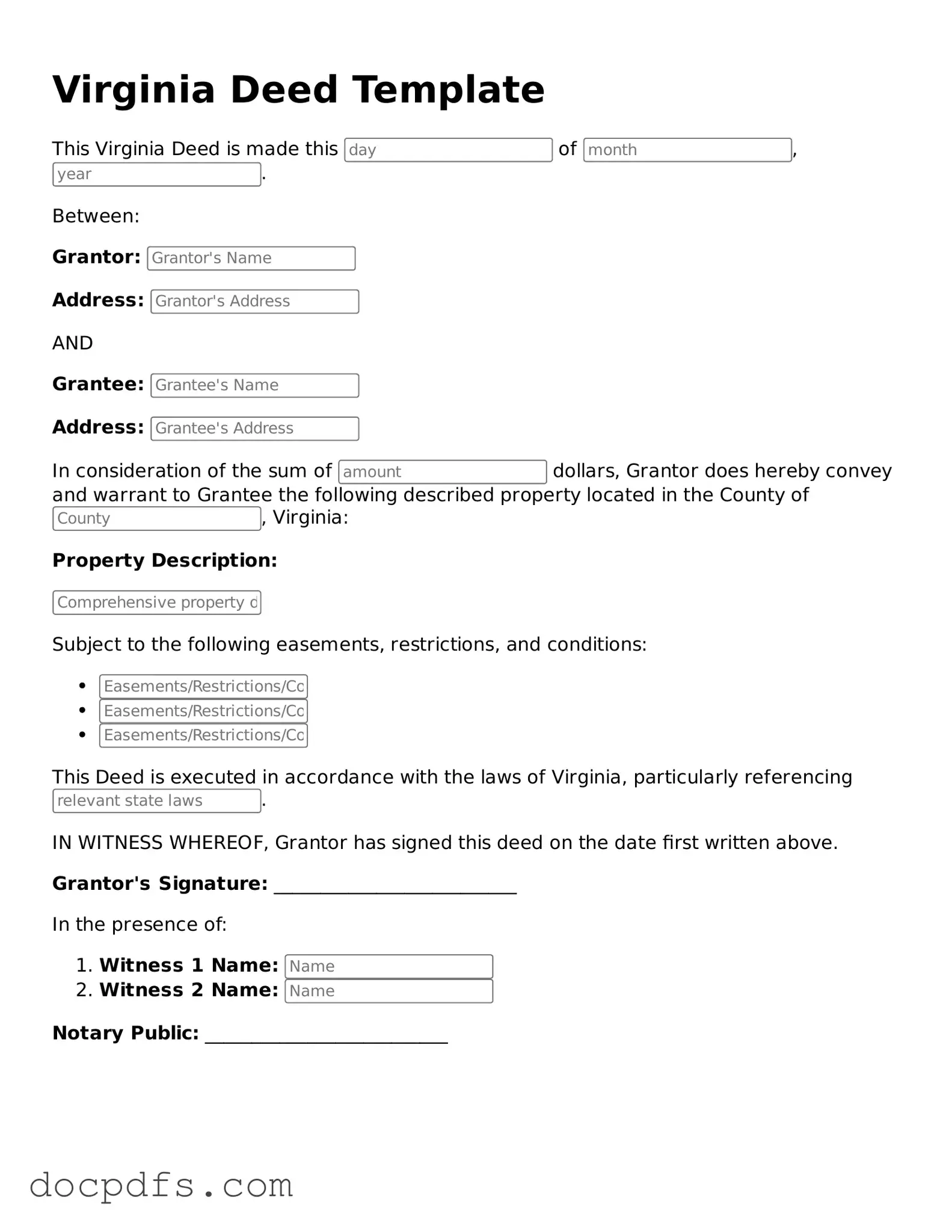The Virginia Deed form serves as a vital legal document in the transfer of real property ownership within the state of Virginia. This form not only outlines the essential details of the transaction but also ensures that both the buyer and seller are protected under the law. Key elements include the names of the parties involved, a clear description of the property being transferred, and the purchase price, if applicable. Additionally, the form may specify any conditions or restrictions related to the property, which can be crucial for future use. Signatures from both parties are required to validate the deed, along with the notarization process, which adds an extra layer of authenticity. Understanding these components is essential for anyone looking to navigate the property transfer process smoothly and legally. By familiarizing oneself with the Virginia Deed form, individuals can approach their real estate transactions with confidence and clarity.
